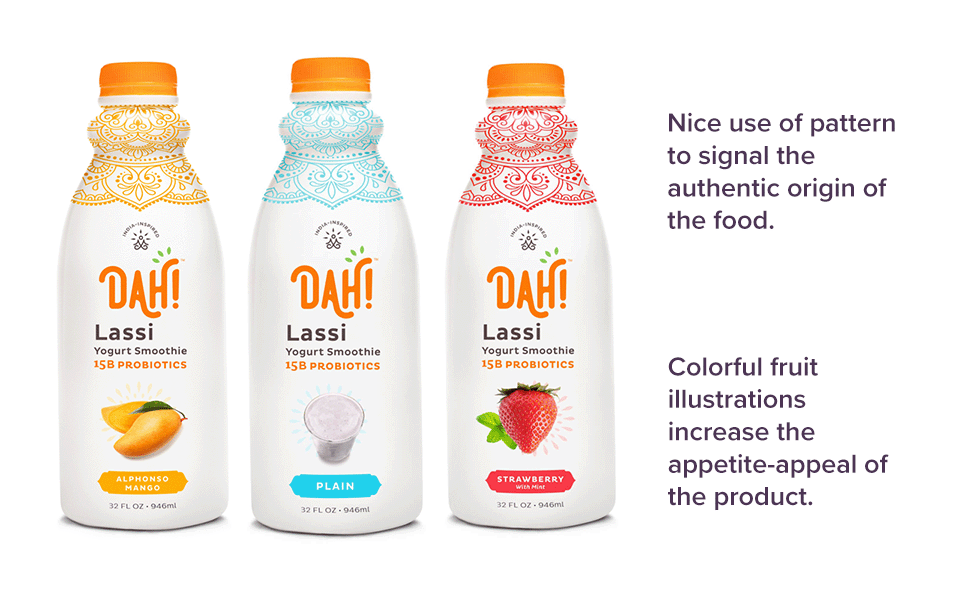Design Strategies for Introducing New Global Flavors to the American Market
One prediction for 2023 that I’m excited about is that Americans will increasingly seek out global flavors. As an avid Foodie, I’m all in on this! As a designer tasked with creating packaging for new food products, one of the main challenges we face is helping brands overcome the customers’ hesitation to try something new. While statistics show an increasing number of people have adventurous palettes, introducing a new food product can still be daunting. Package design plays a critical role in introducing the product and enticing customers to try it. To create packaging that successfully introduces Americans to a new food, we need to consider several key factors. In this post, we will discuss those factors and provide tips on how to create packaging that will attract customers and encourage them to give your product a try.
A strategy I like to use, when introducing a new food experience, is to relate it to a food that the consumer may already be familiar with. One approach might be to emphasize the familiar ingredients that the product shares with more well known cuisines. For instance, a South Asian snack made with chickpea flour can be marketed as an alternative to potato chips. Similarly, a Middle Eastern dip made with chickpeas and tahini can be marketed as a healthier alternative to traditional dips like ranch or French onion. By emphasizing these familiar ingredients and highlighting the similarities to foods that the customer may already be familiar with, we can make the new product feel more approachable and familiar.
Another effective strategy for introducing a new ethnic food product is to connect it to benefits that appeal to the customer's needs and values. For example, if the product is quick and easy to prepare, we can market it as a time-saving option for busy customers who are looking for convenient meal solutions. Alternatively, if the product is affordable or provides better value than existing options, we can highlight this to appeal to customers who are looking for more affordable solutions. Given the current gloomy financial news, this may be a very timely approach. Does your food naturally cater to a specific type of diet, such as plant-based or gluten-free? If so, calling attention to this trait may win over customers. Finally, you could go all-in on appealing to customer’s adventurous spirit by playing up the novelty factor. With the world bouncing back from COVID-imposed lockdowns, there is certainly a growing appetite for travel and adventure. By connecting the new food product to these benefits, we can make it more appealing to a wider range of customers and increase the chances of success in the marketplace.
While we admire this design, it was not created by Ora. Designer unknown.
Something else I see brands wrestle with as they introduce new foods is the need to balance the authenticity of the cuisine with approachability. While it is important to signal the authentic origin of the food, it is also necessary to make it feel approachable to people who are unfamiliar with the cuisine. Designing packaging that strikes this balance is essential in creating an inviting presentation.
Symbolic cultural references such as patterns, colors, buildings, landscapes, or wildlife can be incorporated into the package design to address this challenge. For example, a package design featuring the Taj Mahal or other iconic Indian landmarks would signal the authentic origin of the food. Using bright, bold colors or patterns that are commonly associated with Indian culture, such as paisley or intricate mandalas, can also make the product feel more approachable and visually appealing. By striking a balance between authenticity and approachability, package design can create a connection between the food and the customer that goes beyond a basic need for nourishment.
While we admire this design, it was not created by Ora. Designer unknown.
In conclusion, creating packaging for a new ethnic food product can be a challenging task, but it's also an exciting opportunity to showcase the uniqueness the cuisine. By using design strategies that connect the food to benefits, relate it to familiar ingredients, and strike a balance between authenticity and approachability, we can create packaging that entices customers to try something new. Remember to use great food photography, use messaging that is easy to understand, and avoiding cluttering the package with too many claims. If you're struggling to create packaging that meets all these requirements, don't hesitate to contact Ora for help. Our team of experienced designers can help you create packaging that will make your product stand out on the shelves and encourage people to discover a new food experience.




